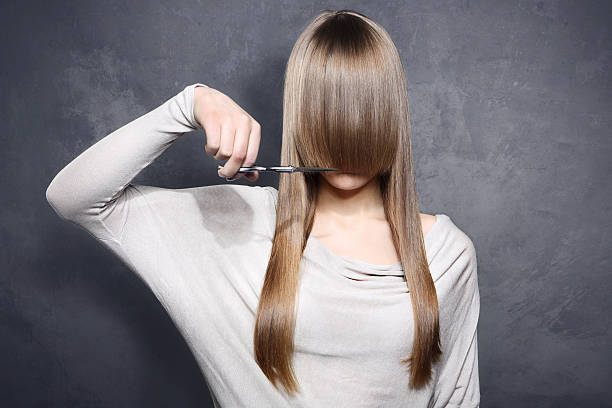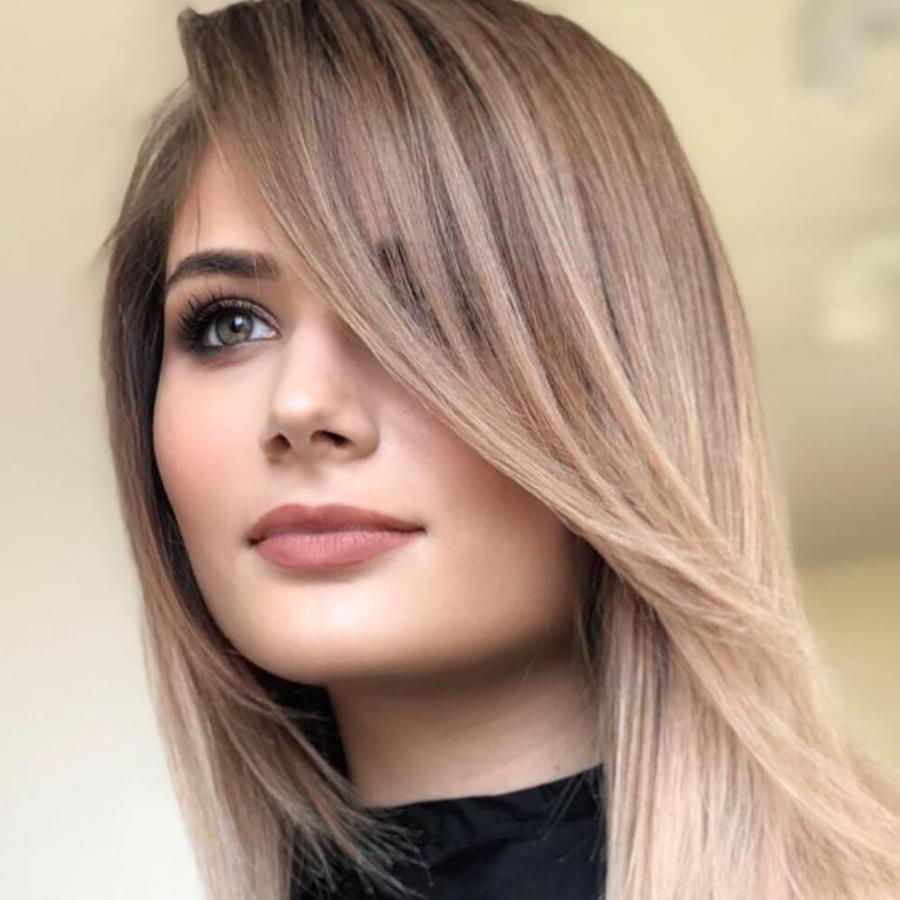Have you ever tried cutting your own hair and ended up with a disaster on your head? One of the most challenging hairstyles for beginners is cutting sideways bangs. However, with proper guidance, you can master this skill and save yourself some money and time. In this article, we’ll provide you with a comprehensive guide on how to cut sideways bangs like a pro.
What Are Sideways Bangs?
Sideways bangs are also known as side-swept bangs. a style of bangs (fringe) that are cut or styled to fall diagonally across the forehead, rather than straight across. These bangs typically start at a longer length at one side of the forehead and gradually get shorter as they sweep diagonally to the opposite side of the face.
Side-swept bangs are known for their versatility and ability to flatter various face shapes. They can be tailored to suit different lengths and angles, allowing for customization to complement an individual’s unique features and hairstyle preferences. Whether worn with long, flowing hair, a bob, or even an updo, side-swept bangs can add elegance and style to a variety of hairstyles.
popular Types of Sideways Bangs
- Long side-swept bangs: These are timeless and versatile, with longer, gently angled bangs that can be pinned or swept to the side. They frame the face beautifully and work well with various hair lengths.
- Short side-swept bangs: Short bangs can be daring and bold, resting just above the eyebrows or higher. They can provide a striking contrast and draw attention to your eyes.
- Layered side-swept bangs: Layered bangs add texture and movement, with shorter layers blending seamlessly into longer ones. They can add volume to the hair and soften the facial features.
Preparing Your Hair
- Wash your hair and let it dry naturally or use a blow dryer. You want your hair to be clean, dry, and free of tangles before you start cutting.
- Determine where you want your bangs to start and end. Use a comb to section off your hair where you want to cut your bangs. Remember that once you cut your hair, you can’t put it back. So, start with a small section and gradually increase it if necessary.
- Use hair cutting scissors. Don’t use regular scissors as they can damage your hair and cause split ends.
How to Cut Sideways Bangs at home

Step 1: Section Your Hair
Use the fine-toothed comb to create a triangular section of hair at the front of your head. The base of the triangle should align with your eyebrows, and the point of the triangle should be at the center of your forehead.
Clip away the remaining hair to keep it out of the way.
Step 2: Determine the Length
With the triangle section of hair in front of your face, use the comb to lift it up and away from your forehead.
Determine how long you want your side-swept bangs to be by holding the hair to the side at the angle you desire. Be conservative with the initial length; you can always trim more later.
Step 3: Start Cutting
Using the hair-cutting scissors, make small, vertical cuts into the hair at a slight angle. Cutting vertically creates a softer, more textured effect. Avoid cutting horizontally, as this can result in a blunt, unnatural look.
Step 4: Check for Evenness
Lower the triangle section of hair and comb it straight down. Check for evenness in length. If necessary, make small adjustments by cutting slightly longer pieces to match the shortest ones.
Step 5: Style Your Bangs
Style your freshly cut side-swept bangs by sweeping them to the side. You can use a flat iron or a round brush to add some curve or volume, depending on your desired look.
Step 6: Final Check
Use a mirror to check your bangs from different angles to ensure they are even and the length suits your face shape.
Tips
Go slow and trim a little at a time. You can always take more off if needed, but you can’t add hair back once it’s cut.
When in doubt, it’s safer to cut your bangs longer initially and then make gradual adjustments as needed.
5 Flattering Hairstyles with Side-Swept Bangs
Long Layers with Side-Swept Bang
Long, layered hair with side-swept bangs is a timeless and flattering combination. The layers add texture and movement to your hair, while the side-swept bangs frame your face elegantly. This style works well for both casual and formal occasions.
Bob with Side-Swept Bangs

A classic bob haircut paired with side-swept bangs creates a chic and sophisticated look. The bob can be tailored to your desired length, from a short bob to a longer, shoulder-length bob. The side-swept bangs add a touch of femininity to this sleek hairstyle.
Messy Waves with Side-Swept Bangs
Loose, tousled waves paired with side-swept bangs create a relaxed and effortless style. This beachy, bohemian look is perfect for a laid-back, casual appearance. Use a curling wand or sea salt spray to achieve those soft waves.
Ponytail with Side-Swept Bangs
A high or low ponytail with side-swept bangs can be both practical and stylish. It’s a versatile option that can be dressed up or down. To elevate the look, wrap a strand of hair around the base of the ponytail to conceal the hair tie.
Updo with Side-Swept Bangs
An updo, such as a bun, chignon, or French twist, paired with side-swept bangs, adds a touch of sophistication for formal events. The contrast between the sleek updo and the soft side-swept bangs creates an elegant and polished appearance.
FAQs
- Is it easy to cut sideways bangs? Cutting sideways bangs requires some skill and patience. However, with proper guidance and practice, you can master this skill.
- How often should I trim my sideways bangs? It’s recommended to trim your sideways bangs every four to six weeks to maintain their length and shape.
- What if I make a mistake while cutting my hair? If you make a mistake while cutting your hair, don’t panic. You can always visit a hair salon or stylist to fix it. However, it’s always better to start with a longer length and gradually trim it down to avoid any mishaps.
- Can I curl my side-swept bangs? Yes, you can style your side-swept bangs in various ways, including curling them using a curling iron or straightener.







